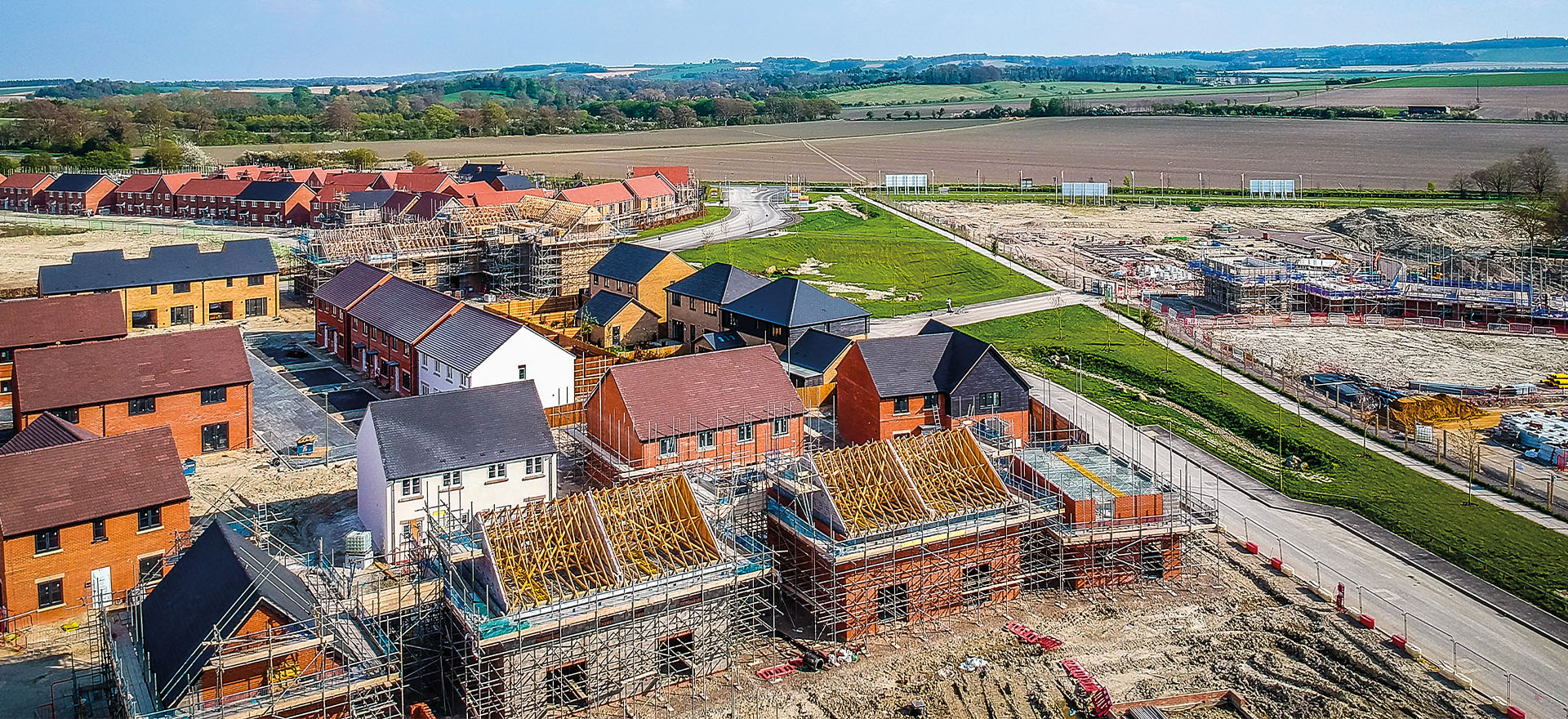The new NPPF also enshrines a ‘vision led’ approach to sustainable transport modes, targeting a significant shift away towards vehicles sustained by renewable energy, public transport and active travel. Inevitably in the mid to long term, National Highways like all transport organisations will need to ensure its role in enabling economic growth is clearly integrated with its approach to achieving net zero. New Towns are another facet of the new Government’s sweeping changes to planning policy in England. Following the establishment of the New Towns Taskforce and recent policy statements, at least 10,000 new homes per new town (or urban extension) are expected.
We know that
“the next generation of new towns must be well-connected”[2]. This is an invitation to National Highways to actively participate in the development of new towns ensuring they are provided with reliable, efficient and sustainable connections to the SRN. Indeed, in many cases, access to the existing or enhanced SRN will be a key locational determinant of new towns. Consequently, it is of paramount importance to the success of the Government’s policy that National Highways is involved at the inception stage through to delivery, growth and consolidation of new towns – National Highways must be at the top table.
Influencing national development programmes
National Highways is already a strong advocate for ensuring the SRN maximises its role as an enabler of economic growth and housing delivery. However, the company wears many hats, some of which can – at times – conflict with each other. National Highways’ license largely limits its mandate to safeguarding the network, which ultimately can create tensions as it transitions to a role as an enabler of growth. We advocate for a clarified remit for National Highways which maintains its historic ‘protection’ of the network but explicitly expands and balances its responsibilities to become a direct agent of growth in defined circumstances and places.
Additional Government support, including an enhanced and more direct remit to enable economic growth and facilitate new development, would be a significant step in putting roads on par with other major infrastructure providers (including rail and energy) while mitigating the potential for internal conflicts of interest. National Highways should be offered a seat at the ‘top table’ if they are to be seriously taken as stewards of growth. This includes a strong role in influencing major national programmes and development initiatives.
Such a role can readily be enhanced, in part through emerging policy measures such as the Government’s English Devolution Bill which will transfer more powers to elected mayors in combined council areas and upper tier authorities. A change in policy will see the establishment of delivery bodies akin to a broad development corporation model. The success of such delivery organisations will, to an extent, rely on positive and early collaboration with National Highways and other infrastructure owners and providers.
A proactive role in plan making
The new NPPF has outlined the Government’s intention to create a “universal system of strategic planning across England in this Parliament”. This will involve “effective strategic planning across local authority boundaries” with a focus on “key spatial issues” and sustainable growth at the local level.
The NPPF consultation aims to
“promote a more strategic approach to planning … ahead of legislation to introduce mandatory mechanisms for strategic planning.” Local authorities in so-called ‘devolution deserts’ will be supported by Government to create a devolution deal that will give them more power over local decision-making. The mayoral and combined authorities will be supported to undertake Spatial Development Strategies, similar to the London Plan. This is another entry point for the involvement of National Highways, ensuring both the needs of the SRN and the conditions to facilitate economic growth are embedded in these plans. As emphasised in
Economic Role 3, National Highways’ contribution to planning and placemaking will generate most value when it is involved at the earliest stages of the formulation of strategic and local plan policies and when its investment is aligned to spatial strategies and complementary public investment.
National Highways should ensure they break away from being a reactive consultee and become an active partner in the new strategic planning process, aiming to have a proactive and positive influence on early-stage decision making. Collaboration need not be confined to local planning authorities or combined and mayoral authorities; new entities such as GB Rail will likely become important partners in the future vision led approaches to both spatial and transport planning. However, for this collaboration and influence to be effective, central Government will need to formally provide National Highways with the remit to do so.
Serving key growth sectors
The new NPPF policy mandates not only a boost in housing delivery but also the identification of sites for the ‘modern economy’ – laboratories, gigafactories, digital infrastructure, and critically
the freight and logistics sector, which heavily relies on the SRN.
The motorway and trunk road network are critical for the effective operation of manufacturing and freight & logistics sectors, ensuring reliable and efficient movement of inputs and the distribution of part and fully-finished goods.
The Government’s new industrial strategy clearly acknowledges the importance of freight and logistics sector having identified it as a priority sector for growth and investment in it’s emerging industrial strategy
[3].
National Highways’ network is essential for the successful operation of SRN-reliant sectors, ensuring businesses can maintain or boost their productivity. Key industries clearly need and relies on the network. The challenge for National Highways is to be given an explicit responsibility for investing in the SRN to meet the growth needs of these industries. Much of this need will be closely aligned with its future role in the planning system, particularly through the delivery of key sites in optimum locations.
National Highways’ recent publication of its
economic roles underscores how important a part the SRN plays in enhancing productivity and competitiveness through network efficiency and strategic investments. As a statutory consultee, and with the government’s push for Local Growth Plans, National Highways is in a prime position to support productivity by fostering connections between the SRN-reliant sectors and the planning system. Early involvement in plan development will enable National Highways to act as a growth agency while balancing any implications on the SRN. This early involvement will be equally important in the development of other spatial and sector strategies and plans including Local Growth Plans, industry-led growth plans and other measures aimed at supporting the growth of the modern economy.






